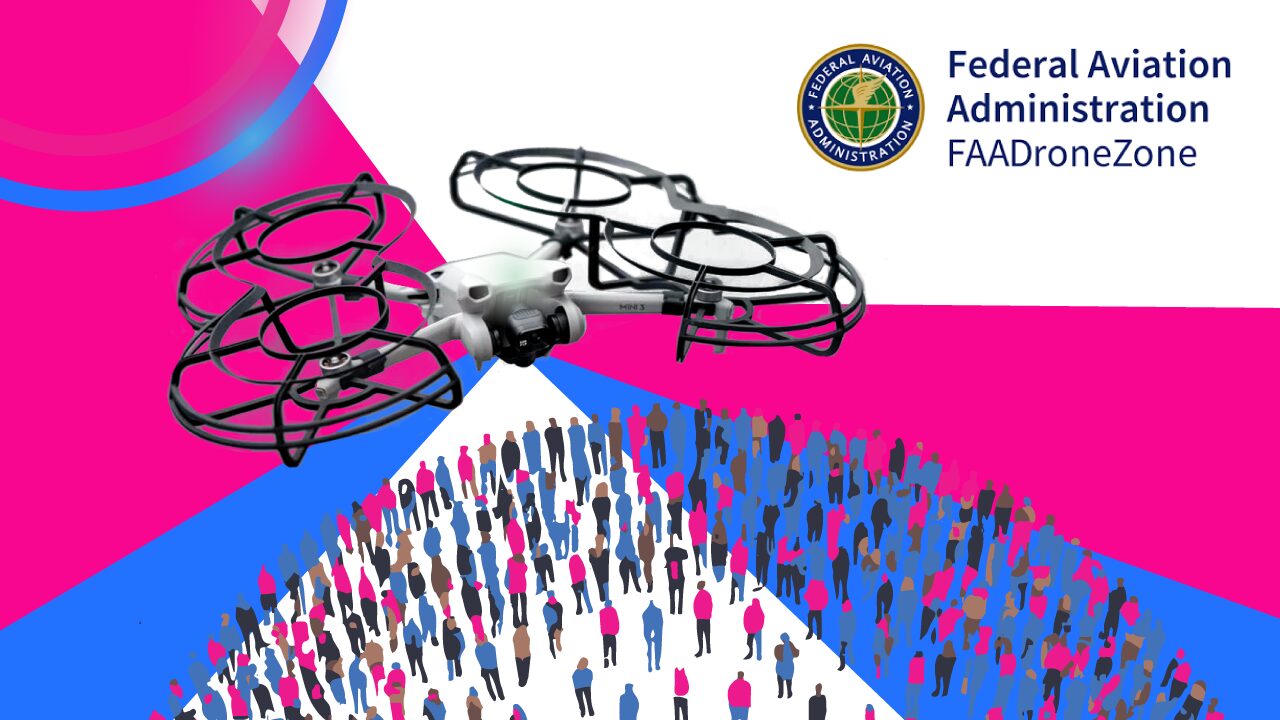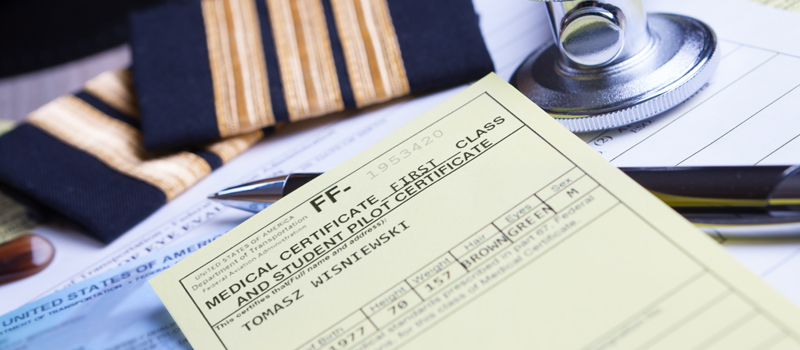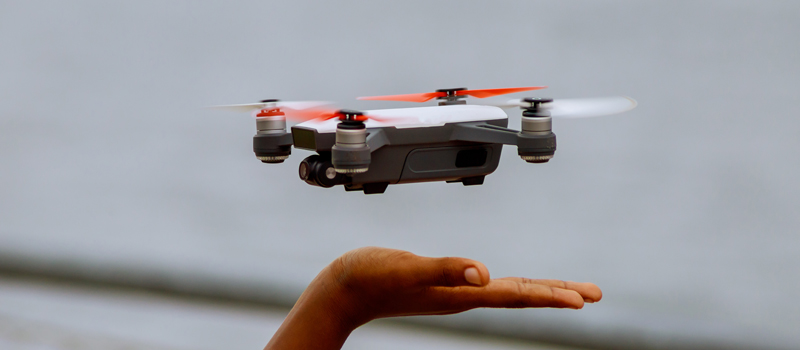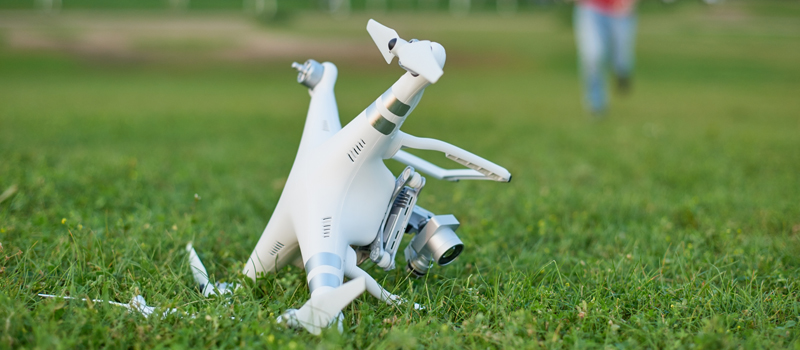There is a lot that you can do with your UAS – if only operations over people were not considered illegal under standard Part 107 rules. There is a way for it to be waived, but that process has had a notoriously high rejection rate in recent years.
This situation seems to be changing now with the FAA relaxing the rules for waiving the regulation on Operations Over People.
How do the new rules work, and how can you benefit from them? Are there specific drones that are more likely to be allowed to fly over people?
Let’s find out.
Key Takeaways
- The FAA has made it easier to secure waivers for UAS operations over people, subject to a few additional safety requirements based on the UAS’s takeoff weight.
- Only the provisions for granting waivers have changed. The original rule on OOP under Part 107 is still in place.
The Old Rule and Why Waivers (Usually) Did Not Work
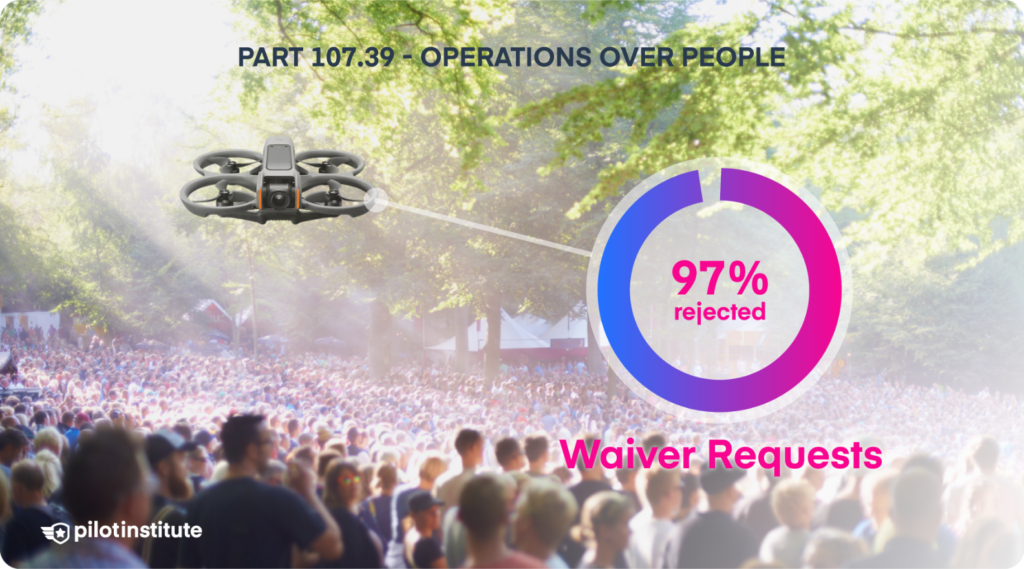
Part 107.39, or operations over people, is technically one of the Part 107 regulations that can be waived.
The FAA has made it somewhat easier with the introduction of categorized drones, but some of the operational limits of this system are still too strict to make them practical for commercial operations.
If you plan to fly over people with a UAS that is not in compliance with the rules based on the category of your drone, then you need to apply for a waiver. This seems like a valid workaround until you hear that a huge majority of 107.39 waiver requests – around 97% – are rejected.
With such a high rejection rate, it was clear that the waiver provision for 107.39 was simply not effective or useful for commercial drone pilots.
What Are the New Rules?
Thankfully, the FAA has been receptive to feedback from the community and has revamped the waiver rules for operations over people. Take note that the regulation has not changed and that a waiver will still be necessary. The only change is that the FAA has relaxed the requirements needed to be granted this waiver.
The new rules can be categorized in two based on the weight of your UAS:
Over 0.55 Lbs and 0.88 Lbs or Less
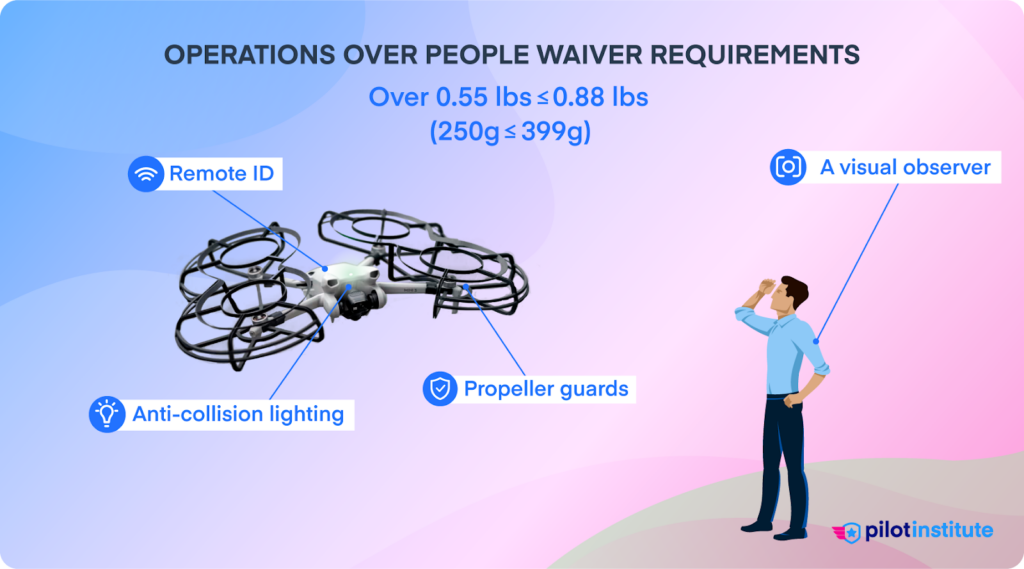
If your drone weighs over 0.55 lbs (250 grams) but less than or equal to 0.88 lbs (399 grams), you will need propeller guards, anti-collision lighting, Remote ID, and a visual observer. You will still need to apply for a waiver, but your request is very likely to get approved as long as you comply with the requirements stated above.
Just this new rule alone opens up operations over people for many drones. The list of drones that fall within this weight category includes:
- All DJI Mini drones;
- The Autel Nano;
- The Parrot Anafi and Anafi Thermal; and
- The DJI Avata 2.
Over 0.88 Lbs and Less than 3.5 Lbs
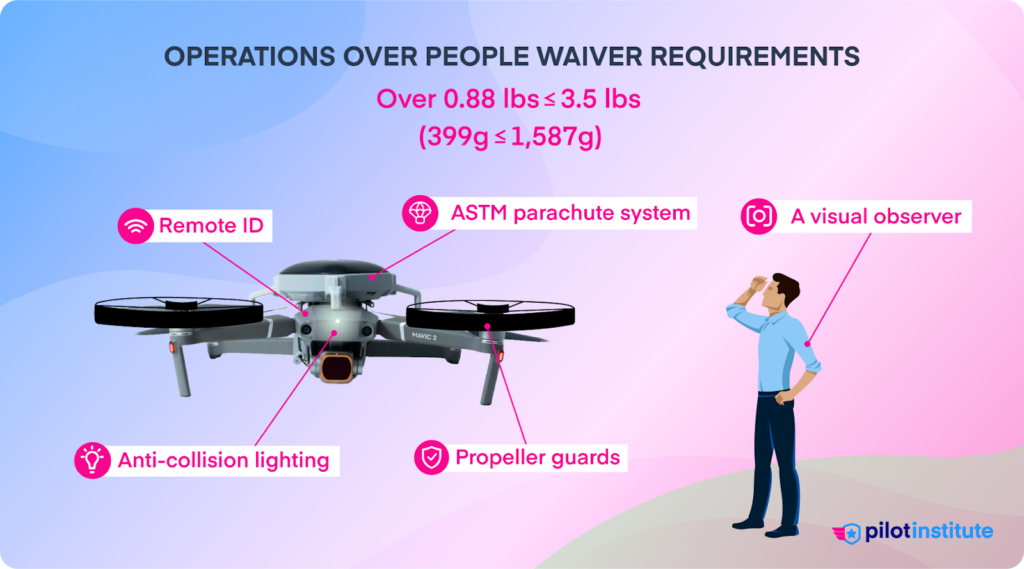
A different rule applies for drones that weigh over 0.88 lbs (399 grams) but less than 3.5 lbs (1587 grams).
A waiver will still be needed along with the requirements for the smaller drones – the propeller guards, anti-collision lighting, visual observer, and Remote ID. In addition, you will need an ASTM parachute system.
Again, having these requirements when you submit a waiver request makes it very likely that you will be granted the waiver. There is a much wider range of drones under this category, but the most popular ones are as follows:
- DJI Air Series
- DJI Mavic Series
- Autel Lite and Evo 2 Series
- Parrot Anafi AI
- Skydio 2 and X2
- Phantom 4 Pro V2
- DJI FPV
- Avata 1
How to Submit a Waiver Request
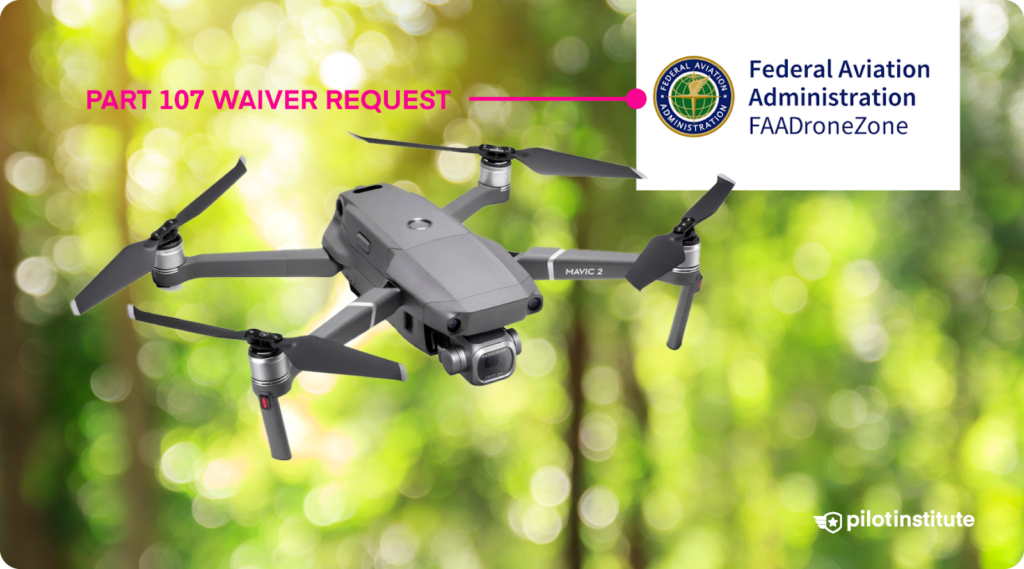
Waiver requests are still submitted via the FAA Drone Zone website. The FAA provides very helpful documentation on how to submit a waiver request, which we highly recommend you review.
Answer all the questions on the waiver request form. Although this process is much easier now, you cannot cut corners on the application.
What About the Categories for Drones?
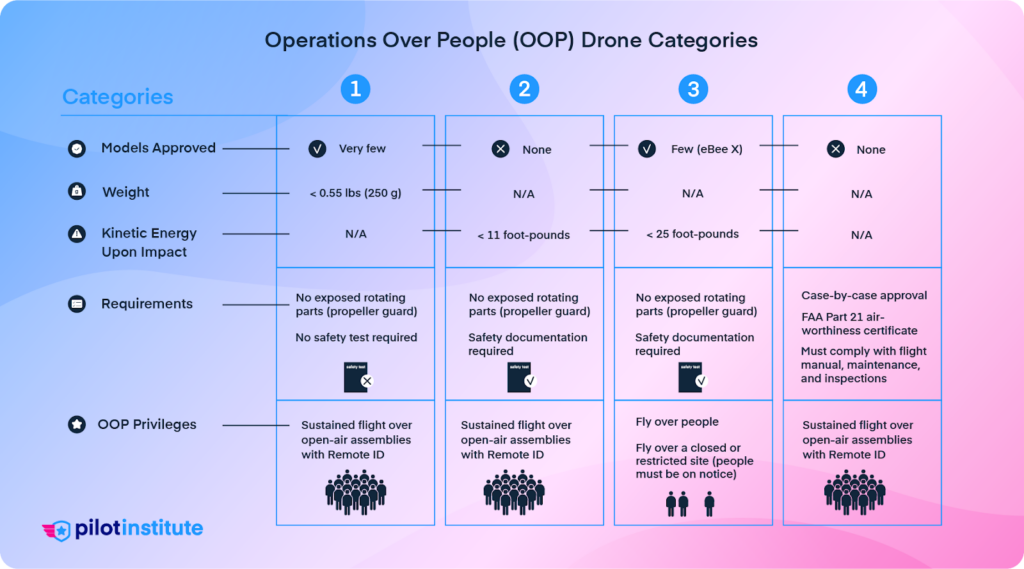
Before this new change, the FAA had already created rules for flying UAS over people based on weight categories. This system provided specific sets of restrictions on UAS operations over people depending on which category your drone belonged to.
While this all sounds great on paper, practically all the drones that the FAA has formally approved are Category 1 drones or those that weigh 0.55 lbs. or less. This makes for a very small subset of drones that can fly over people—especially if you consider that Category 1 drones will need to have propeller guards to satisfy the category’s requirements. This leaves you with a selection of very small and light drones that are not exactly suitable for commercial work.
Only one UAS has been approved under Category 3 (the senseFly eBee), and zero drones have been approved under Categories 2 and 4.
This rule, published in 2021, would have been a great way for UAS operators to fly over people without having to request waivers. From a practical standpoint, however, it simply has not been a viable set of rules for commercial UAS operators to fly under.
Conclusion
The FAA has recognized that there have not been many accidents involving drone crashes over people and has decided to relax the rules on granting OOP waivers. Take note that the rule on OOP has not actually changed—the FAA just made it easier to waive the regulation.
The new waiver rules also make it quite clear that safety remains an important element in UAS operations.
This means buying some new hardware if you plan to fly over people, such as parachutes and propeller guards. The additional safety requirements are not particularly hard to comply with and can be a huge help in avoiding accidents and minimizing damage should an accident happen.
